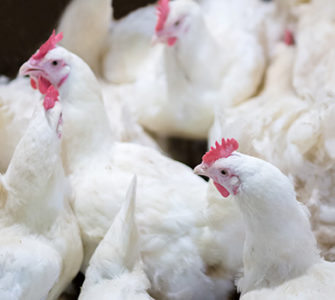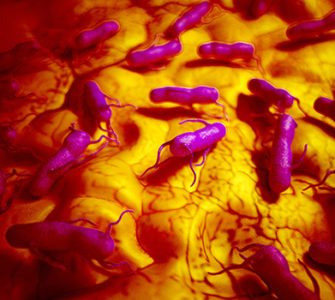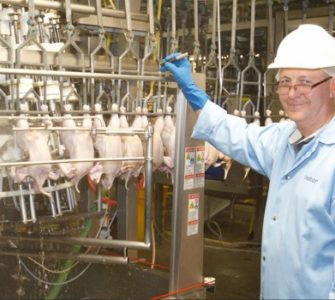New standards for foodborne pathogens expanding control programs to live production
A rise in the prevalence of Salmonella on whole chicken carcasses since USDA changed the testing medium used could indicate the prevalence of the pathogen was previously underestimated, Dianna Bourassa, PhD, poultry specialist at Auburn University Extension, told Poultry Health Today.
In July 2016, USDA’s Food Safety and Inspection Service (FSIS) switched the testing medium it used from regular buffered peptone water to neutralizing buffered peptone water (nBPW). The new medium neutralizes any antimicrobials that entered the rinse sample from processing-plant interventions. When the regular buffered peptone water was used, those antimicrobials may have masked Salmonella, she explained.
Live-production control
Some processing plants have adjusted to nBPW by switching to different antimicrobials or by using mechanical interventions such as brushes to remove fecal matter before the carcasses reach the scalder. However, Bourassa believes the prevalence of Salmonella needs to be reduced during live production so there’s less coming into the processing plant.
Salmonella can be minimized at every step of production ranging from breeding to growout, she said, with measures such as breeder vaccination, broiler vaccination, biosecurity and gut-health interventions.
Bourassa noted that the new USDA standards for Salmonella and Campylobacter were developed before the switch to nBPW, which caused some confusion in the industry. FSIS studied the issue and concluded the standards don’t need to be revamped.
However, since the prevalence of Salmonella has risen since implementation of nBPW, she believes the standards should be redone by FSIS using nBPW.
Using chicken samples taken directly from a commercial processing plant, Bourassa compared findings for Salmonella and Campylobacter when nBPW or buffered peptone water were used before, during and after chilling. There were definite differences in results depending on which testing medium was used, she said.
For instance, there were lower levels of Campylobacter when nBPW instead of regular buffered peptone water was used for testing, a finding that concerns Bourassa. Is there something in the nBPW that affects the detected prevalence of Campylobacter? She thinks it’s worth investigating in more detail.
Bourassa plans to develop a simple, inexpensive test using nBPW for in-house testing by processing plants. Currently, many plants are still using regular buffered peptone water for their in-house testing due to the cost of nBPW, she said. A simplified test with nBPW would be more likely to reflect FSIS testing results than regular buffered peptone water.
Posted on February 6, 2019

















